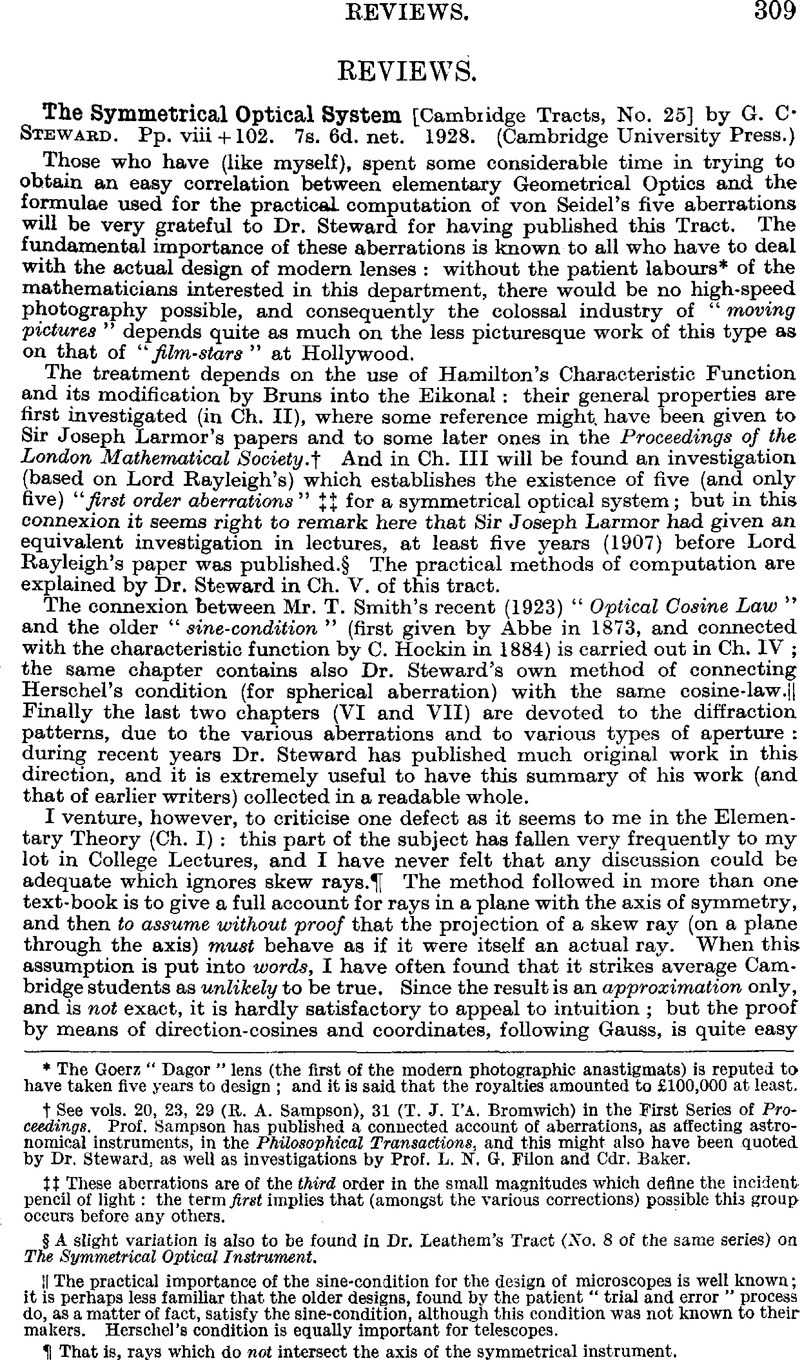No CrossRef data available.
Published online by Cambridge University Press: 03 November 2016

page 309 note * The Goerz “Dagor” lens (the first of the modern photographic anastigmats) is reputed to have taken five years to design; and it is said that the royalties amounted to £100,000 at least.
page 309 note † See vols. 20, 23, 29 (R. A. Sampson), 31 (T. J. I’A. Bromwich) in the First Series of Proceedings. Prof. Sampson has published a connected account of aberrations, as affecting astronomical instruments, in the Philosophical Transactions, and this might also have been quoted by Dr. Steward, as well as investigations by Prof. L. N. G. Filon and Cdr. Baker.
page 309 note ‡ These aberrations are of the third order in the small magnitudes which define the incident pencil of light: the term first implies that (amongst the various corrections) possible this group occurs before any others.
page 309 note § A slight variation is also to be found in Dr. Leathem’s Tract (No. 8 of the same series) on The Symmetrical Optical Instrument.
page 309 note ∥ The practical importance of the sine-condition for the design of microscopes is well known; it is perhaps less familiar that the older designs, found by the patient “trial and error” process do, as a matter of fact, satisfy the sine-condition, although this condition was not known to their makers. Herschel’s condition is equally important for telescopes.
page 309 note ¶ That is, rays which do not intersect the axis of the symmetrical instrument.
page 310 note * A simple treatment will be found in this number of the Gazette (p. 301).
page 310 note † It is true that the first proof of the fundamental Lemma of the calculus of variations had been given by Stegemann (1854) and that Weierstrass himself quotes Heyne. But Weierstrass was probably the first who explained clearly the reasons why such a proof is necessary.